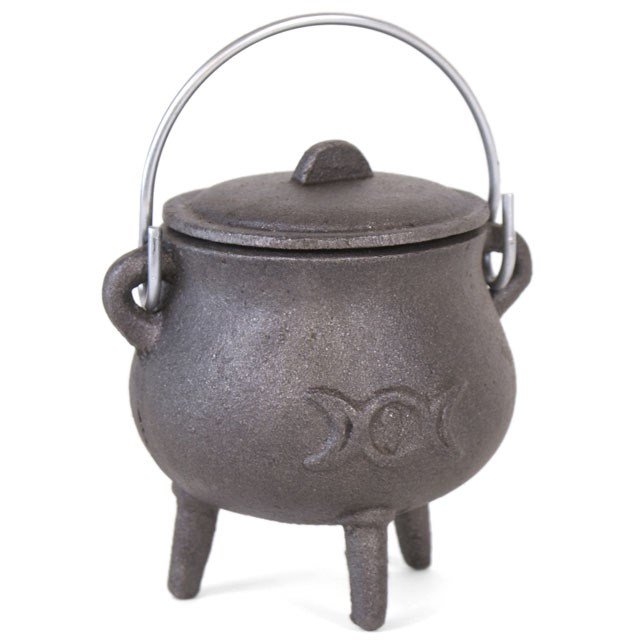
A cauldron (or caldron) is a large pot for cooking or boiling over an open fire. Sometimes with a lid and usually with a handle to suspend over a fire or feet. The word cauldron is first recorded in Middle English as caudroun from the Latin caldārium “hot bath”.
Utility tool to folklore
Cauldrons can be found from the late Bronze Age period; these include vast ones with a volume of 60–70 litres. Cauldrons have fallen out of use in the developed world as cooking pots. However, in Western culture the primary image is the cauldron’s use in witchcraft, a cliché popularized by various works of fiction, such as William Shakespeare’s play Macbeth where witches prepare their potions in a cauldron.
Irish folklore,
A cauldron is where leprechauns keep their gold and treasure.
Celtic mytholog
The cauldron is associated with the goddess Cerridwen.
Welsh mythology
and literature, the Pair Dadeni (Cauldron of Rebirth) is a magical cauldron able to resurrect the dead. It plays a key role in Branwen ferch Llŷr, the second branch of the Mabinogi. Pair Dadeni was destroyed by Efnysien in a battle with the Irish. Seeing that the Irish were using the cauldron to revive their dead, he hid among the Irish corpses and was thrown into the cauldron by the Irish. He destroyed the cauldron from within, sacrificing himself in the process.
It is one of several magic cauldrons in Welsh legend and folklore, including the cauldron of Diwrnach the Irishman in Culhwch and Olwen, the cauldron of the Head of Annwn in Preiddeu Annwfn and the cauldron of Cerridwen in the tale of Taliesin.
Arthurian legend
The Holy Grail is sometimes referred to as a “cauldron”, although traditionally the grail is thought of as a hand-held cup rather than the large pot that the word “cauldron” usually is used to mean. This may have resulted from the combination of the grail legend with earlier Celtic myths of magical cauldrons.
Chinese history
A cauldron is a “ding” and possession of one or more ancient dings is often associated with power and dominion over the land. Therefore, the ding is often used as an implicit symbolism for power.
Wicca
In Wicca and other forms of neopagan or pagan belief systems, the cauldron is still used in magical practices. A cauldron is used to burn loose incense on a charcoal disc to make black salt (used in banishing rituals). Cauldrons are also used for mixing herbs, or to burn petitions (paper with words of power or wishes written on them).
Cauldrons symbolize not only the Goddess but also represent the womb (because it holds something) and on an altar, it represents earth because it is a working tool.
